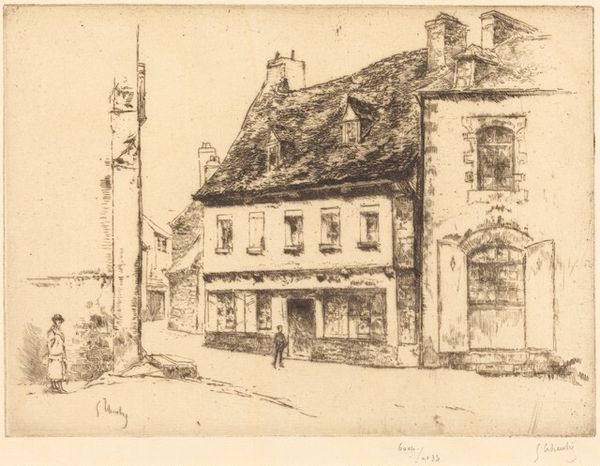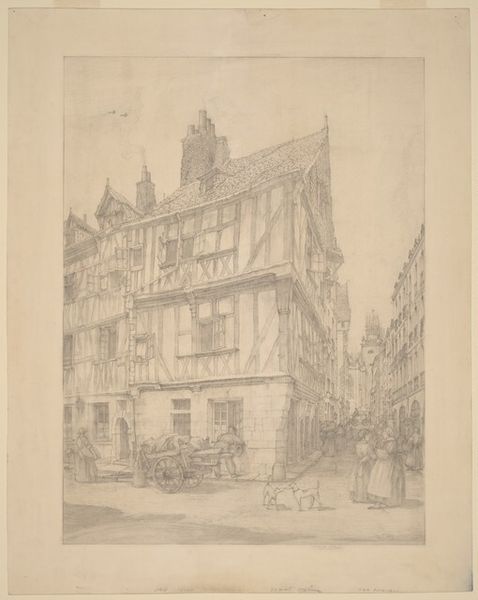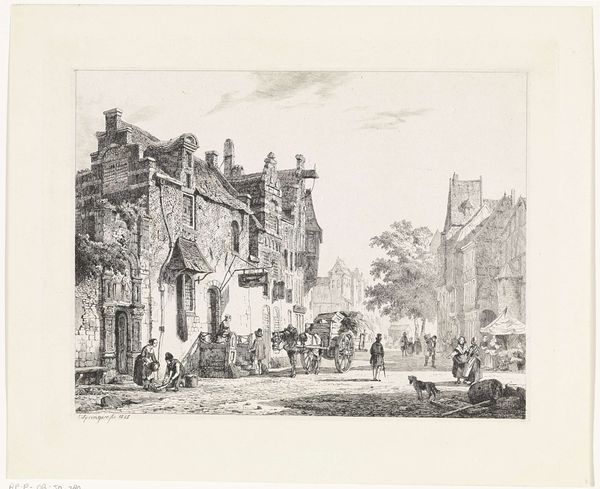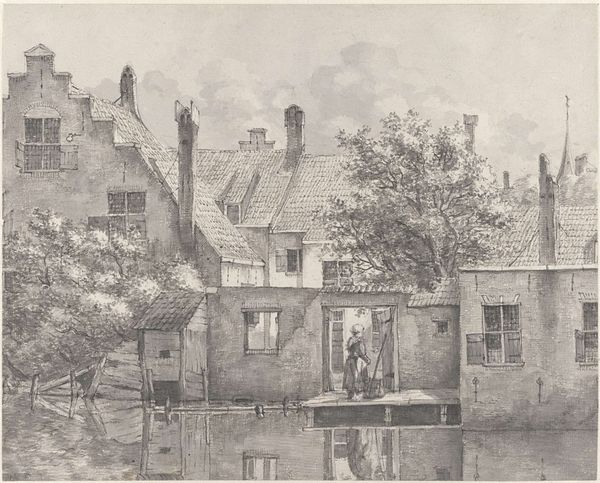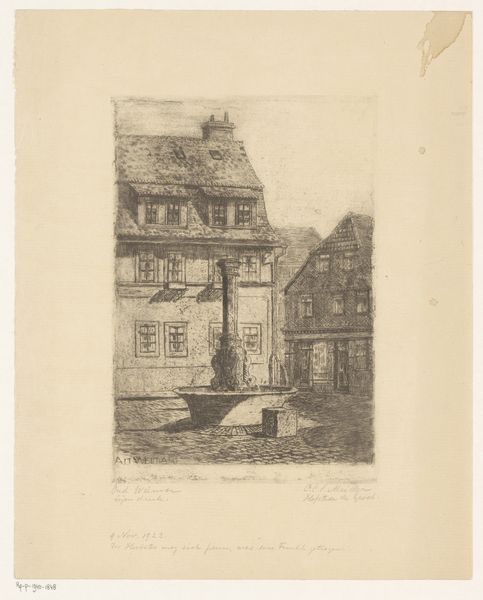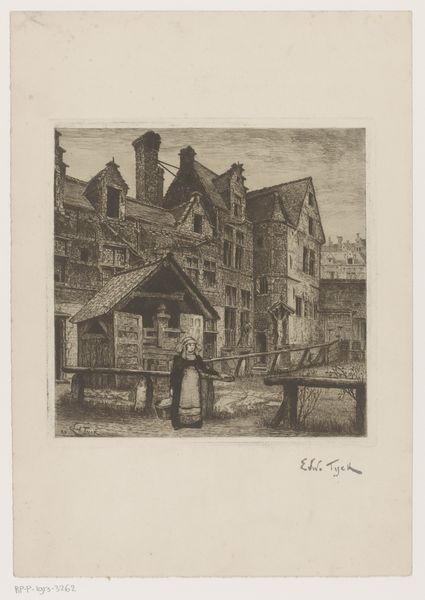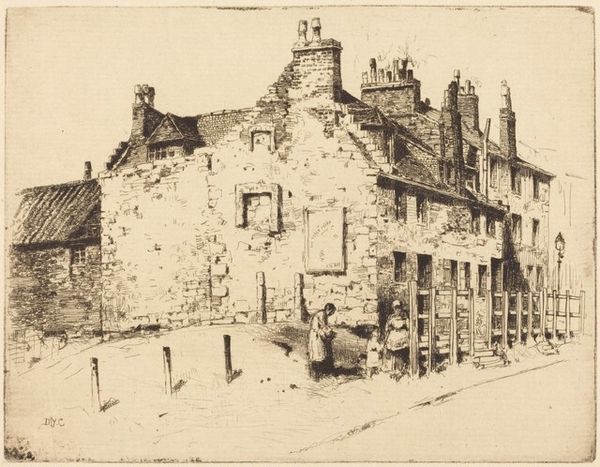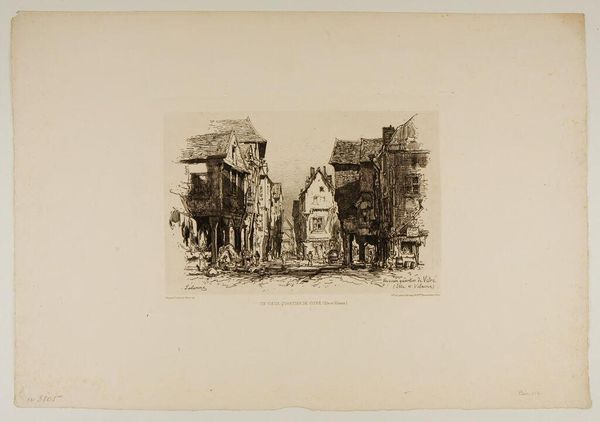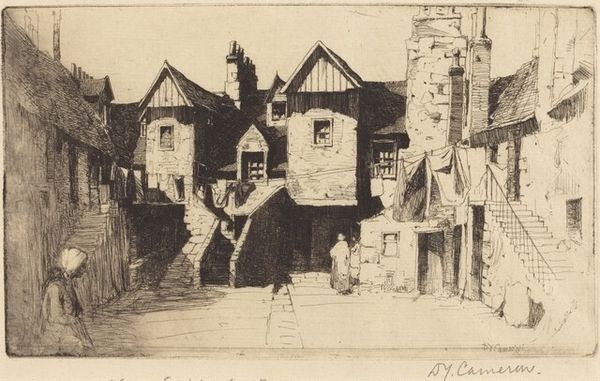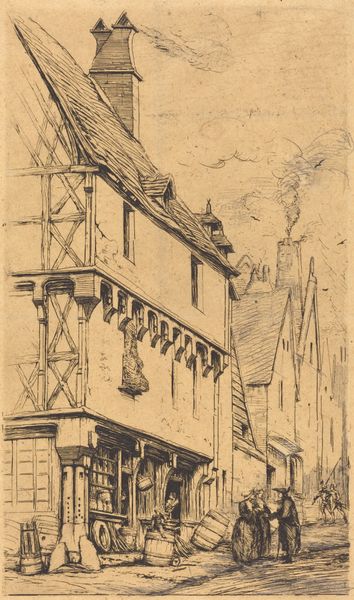
Dimensions: 126 × 201 mm (image/plate); 152 × 227 mm (sheet)
Copyright: Public Domain
Curator: Looking at this print, I'm immediately struck by the intricate linework and the hushed, almost somber mood it evokes. Editor: It’s an etching entitled "Old Houses, Amiens," dating back to 1907, created by Auguste-Louis Lepère. This print, rendered on paper, resides here at The Art Institute of Chicago. Curator: The Amiens Cathedral looming in the background…it casts a long shadow, not just physically, but perhaps symbolically. I wonder what collective narratives or anxieties might have been intertwined with this cathedral in the early 20th century? Editor: Lepère, I believe, was very attuned to the rapid urbanization of Paris and other French cities at the time. His choice to depict older, presumably less modernized areas offers a visual commentary on the transformations, erasures, and maybe the cultural amnesia associated with this relentless progress. Curator: Yes! And there's a tangible sense of weight, of history embedded in those weathered facades. These buildings are not merely structures, but containers of memory and experience, made physical. The almost gothic cathedral evokes certain ancestral and almost archaic narratives that run underneath a growing Paris. Editor: You know, Lepère's technique is key to understanding the politics here. The precision of the etching allows for remarkable detail, almost photorealistic, which lends an air of authenticity. It resists the romanticized, sentimental views that were gaining popularity in painting at this time. The city depicted here is shown with an acute understanding of its state and architecture, without shying away from signs of poverty and disrepair. Curator: True, that resistance to romanticization is palpable! These are houses that are lived in, weathered by time, marked by use. The lines create a sense of depth, but also of enclosure – both a literal representation of the narrow streets, and perhaps a psychological representation of living within defined historical structures. The almost hazy style creates a liminal effect and makes us see the beauty in a world caught between new development and old architecture. Editor: It's powerful to see how an artist used printmaking not just to document a changing urban landscape but to probe the emotional and socio-political implications of such change, allowing a past time to mingle with present ideas. Curator: I agree. And perhaps that’s what continues to draw us to these old houses and their shadows, even today—they remind us that the present is built upon, and inextricably linked to, the past.
Comments
No comments
Be the first to comment and join the conversation on the ultimate creative platform.
